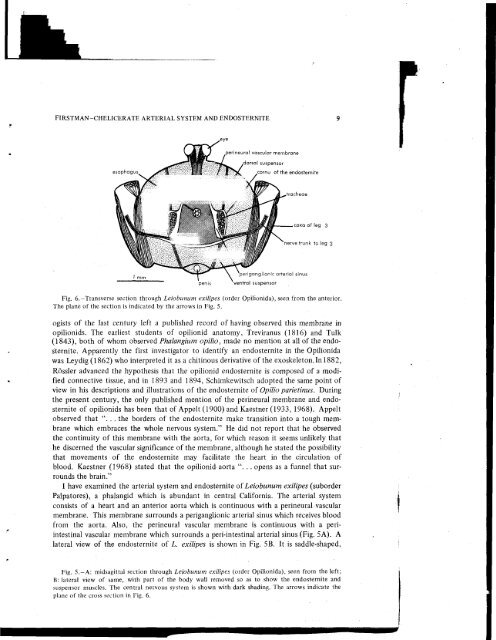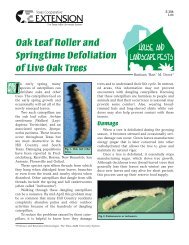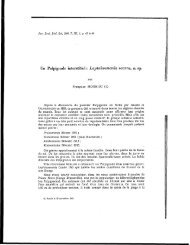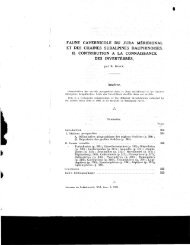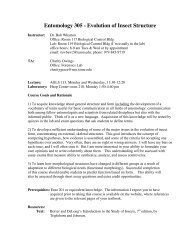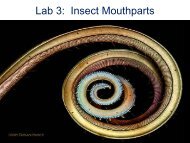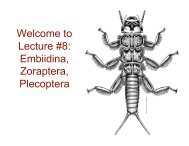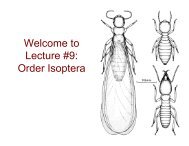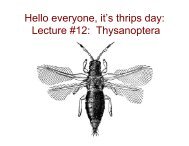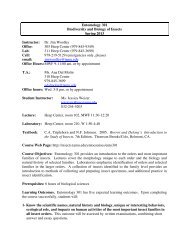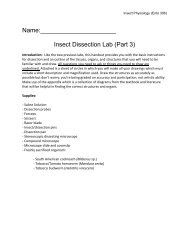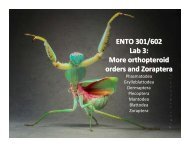THE RELATIONSHIP OF THE CHELICERATE ARTERIAL SYSTEM ...
THE RELATIONSHIP OF THE CHELICERATE ARTERIAL SYSTEM ...
THE RELATIONSHIP OF THE CHELICERATE ARTERIAL SYSTEM ...
You also want an ePaper? Increase the reach of your titles
YUMPU automatically turns print PDFs into web optimized ePapers that Google loves.
FIRSTMAN-<strong>CHELICERATE</strong> <strong>ARTERIAL</strong> <strong>SYSTEM</strong> AND ENDOSTERNITE,eyeTineura! vascular membraneesophagus,fdorsal suspensor(cornu of the endosternite.tracheaecoxa ofleg 3nerve trunk to leg 3penisperiganglionic arterial sinusVentral suspensorFig. 6.—Transverse section through Leiobunum exilipes (order Opilionida), seen from the anterior.The plane of the section is indicated by the arrows in Fig. 5.ogists of the last Century left a published record of having observed this membrane inopilionids. The earliest students of opilionid anatomy, Treviranus (1816) and Tulk(1843), both of whom observed Phalangium opilio, made no mention at all of the endosternite.Apparently the first investigator to identify an endosternite in the Opüionidawas Leydig (1862) who interpreted it äs a chitinous derivative of the exoskeleton.In!882,Rössler advanced the hypothesis that the opilionid endosternite is composed of a modifiedconnective tissue, and in 1893 and 1894, Schimkewitsch adopted the same point ofview in his descriptions and illustrations of the endosternite of Opilio parietinus. Duringthe present Century, the only published mention of the perineural membrane and endosterniteof opilionids has been that of Appelt (1900) and Kaestner (1933, 1968). Appeltobserved that "... the borders of the endosternite make transition into a tough membranewhich embraces the whole nervous System." He did not report that he observedthe continuity of this membrane with the aorta, for which reason it seems unlikely thathe discerned the vascular signiflcance of the membrane, althoughhe stated the possibilitythat movements of the endosternite may facilitate the heart in the circulation ofblood. Kaestner (1968) stated that the opilionid- aorta ". . . opens äs a funnel that surroundsthe brain."I have examined the arterial system and endosternite of Leiobunum exilipes (suborderPalpatores), a phalangid which is abundant in central California. The arterial systemconsists of a heart and an anterior aorta which is continuous with a perineural vascularmembrane. This membrane surrounds a periganglionic arterial sinus which receives bloodfrom the aorta. Also, the perineural vascular membrane is continuous with a periintestinalvascular membrane which surrounds a peri-intestinal arterial sinus (Fig. SA). Alateral view of the endosternite of L. exilipes is shown in Fig. 5B. It is saddle-shaped,Fig. 5.-A: midsagittal section through Leiobunum exilipes (order Opilionida), seen from the left;B: lateral view of same, with part of the body wall removed so äs to show the endosternite andsuspensor muscles. The central nervous system is shown with dark shading. The arrows indicate theplane of the cross section in Fig. 6.


